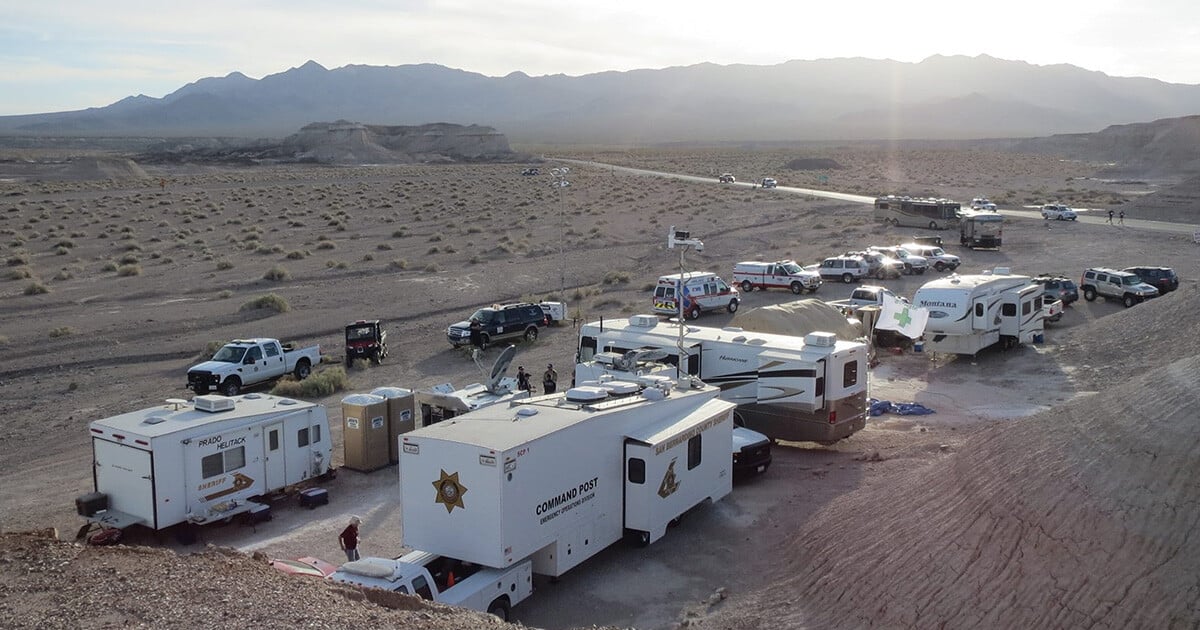Baker to Vegas: Leveraging Pulsara to Manage a Planned Event
Although they have the advantage of prior awareness and preparation, large-scale planned events pose unique challenges for emergency management...
2 min read
 Team Pulsara
:
Aug 01, 2019
Team Pulsara
:
Aug 01, 2019
![Employee Retention: Engage EMS Providers With Opportunities for Advancement [EMS1 2019 Trend Report - Part 2]](https://www.pulsara.com/hubfs/medic-amb-medic-radio.jpg)
EDITOR'S NOTE: Last month, EMS1, Fitch & Associates, and the National EMS Management Association released their fourth annual EMS Trend Report, proudly sponsored by Pulsara. We invite you to read, ponder, and share the following information brought to you by the most prestigious thought leaders in EMS.
--
The 2019 EMS Trend Report confirmed that EMS professionals’ deep concerns about recruitment and retention in last year’s survey have not been alleviated. Once again, the ability to find and keep qualified people has survey respondents at all levels — from field providers, to medical directors to chiefs — worried. Not surprisingly, compensation is a common reason for leaving an EMS job. But it’s not the only one.
Survey respondents also ranked career advancement opportunities as a significant contributing factor in why EMS practitioners leave not just their organizations, but sometimes the field entirely.
This year, we further probed retention by including a specific question about burnout, asking respondents, “Based on your own definition, how would you rate your level of burnout?” Field supervisors were the most likely to rate themselves with high levels of burnout: nearly 16% of supervisors said they experience constant burnout symptoms and frequently feel frustrated at work, or are completely burned out and need help or to make a change.
Over the years, in a number of the organizations we’ve worked with, supervisors have been described as Oreo cookies. That is, they see themselves as the cream filling (or glue) between crewmembers and upper management. When a difficult issue pulls those two factions apart, a little filling gets stuck on both sides of the cookie. Divided loyalties may be a factor in feeling frustrated and, eventually, burned out. Simply acknowledging the inherent challenges of the role — and recognizing the dual loyalties — is a first step toward decreasing burnout among midlevel managers.
After the EMS Trend Report revealed retention as a top concern, a team of EMS professionals further explored incentives to help EMS organizations prevent losing EMS practitioners at the Spring 2019 Ambulance Service Manager program. The group constructed a targeted survey on this point. Their findings were consistent with the EMS Trend Report results as to the importance of wages and benefits. They also identified other opportunities to enhance retention, including better management of workload and career advancement opportunities. Across different age segments, respondents from Generation Z (ages 18-24) focused on workload, career advancement opportunities and flexible scheduling options; while Generation Y (ages 25 to 39), also known as Millennials, identified child care as a priority (possibly as a result of both parents working outside the home).
The ASM group also asked: “What change would you make to better EMS?” Beyond pay and benefits, frequent responses included:
Career advancement has been consistently identified in recent EMS Trend Reports as a significant factor in improving employee satisfaction. EMS leaders who care about retaining their best employees must address this issue and stop making excuses.
Even in small organizations where formal promotions are infrequent, agencies can find other ways to help EMS clinicians develop professionally and enrich their careers. Well-organized field training officer programs are an easy way to start. Depending on organization structure and system design, consider options such as designating station leaders, shift leaders or team leaders of specialty units (e.g.,mobile integrated health, critical care transport, tactical EMS or search and rescue).
Find ways to support and reward those who take on other roles, such as training and education or interfacing with local public health and emergency management, and offer career advancement opportunities. Each of these are positions that could be established and might not necessarily require significant increases in compensation. The payoff, however, could be significant satisfaction, engagement and retention dividends for your organization.
Jay Fitch, PhD, is a founding partner of Fitch & Associates, and has spent more than four decades serving the EMS community as a leader, author, speaker, educator and consultant.

Although they have the advantage of prior awareness and preparation, large-scale planned events pose unique challenges for emergency management...

For Those Who Love a Good "Oopsie!" At Pulsara, we pride ourselves on enabling secure, HIPAA-compliant communication for healthcare teams. But let’s...

March Recap A New Integration: Improving Data Management, Streamlining Workflows, and Improving Care CoordinationOnly a few days ago, we announced...